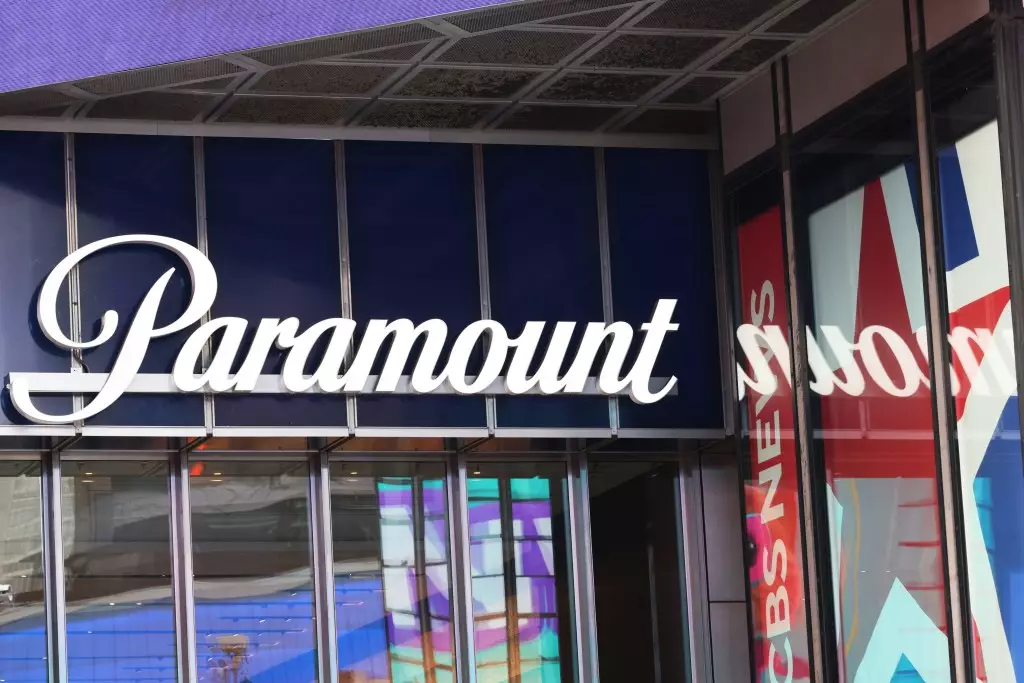In the realm of corporate mergers, the dual forces of ambition and regulation often collide, and the potential merger between Paramount Global and Skydance Media serves as a poignant case study. With the annual shareholder meeting now scheduled for July 2, there’s an unmistakable sense of tension surrounding this deal valued at a staggering $8 billion. Paramount asserts its confidence that this merger will close in the first half of 2025; however, the mounting delays and regulatory scrutiny indicate otherwise. Paramount’s unique structure as a “controlled” company, primarily steered by Non-Executive Chairwoman Shari Redstone and her family, raises questions about shareholder influence and the operational transparency typical in such negotiations.
The decision to conduct the shareholder meeting virtually at 9 a.m. ET signifies a cautious approach in today’s evolving business landscape. This format, while efficient, also underscores the disconnect between shareholders and executives, particularly when significant changes in governance—such as the appointment of up to three new board members—are at stake. The nominated figures—Attorney Mary Boies, ex-judge Roanne Sragow Licht, and venture capitalist Charles Ryan—are presumably intended to steer the company through turbulent waters, although their collective ability to influence the imminent merger remains to be seen.
Regulatory Hurdles and Political Undercurrents
The primary obstacle to the Skydance merger is the approval from the Federal Communications Commission (FCC). Yet, the evaluation process has become mired in controversy due to external factors, particularly the legal battle initiated by former President Donald Trump against CBS. The fact that the FCC’s Chair, Brendan Carr, is a Trump appointee has added layers of complexity to the approval process. The juxtaposition of political allegiance and corporate approval raises valid concerns about impartiality in regulatory reviews. As the commission’s timeline for assessment remains vague, industry observers are left wondering what this prolonged silence signifies for Paramount’s strategic ambitions.
It is particularly striking that this clash has emerged despite the known affiliations between Redstone, Larry Ellison (a backer of Skydance), and Trump himself. The irony is not lost on commentators observing a company that could have leveraged Republican ties and influence, now stymied by the very political forces that ostensibly should align with its interests. The competitive landscape of media has become increasingly hostile, hindering what many believed would be a seamless merging of creative forces in a rapidly changing industry.
Reassessing Company Performance amid Distractions
Amidst the uncertainty and politics, Co-CEOs George Cheeks, Chris McCarthy, and Brian Robbins made a bold assertion in their shareholder letter, emphasizing Paramount’s resilience and accomplishments through a tumultuous economic period. However, the celebration of a “transformative year” rings somewhat hollow when juxtaposed against the backdrop of persistent distractions stemming from external pressures and internal governance shifts.
The narrative of a company poised for growth clashes with the reality of a board that has seen a significant contraction—from four to seven members—within a tumultuous year. This attempt to instill fresh perspectives within a leaner leadership structure might reflect a desperate bid to navigate an increasingly complex media landscape. If recent events have shown anything, it is that adaptability and foresight are paramount, and yet, communication of these aspirations to shareholders has struggled to match the urgency of the moment.
Additionally, the reported rejection of an eight-figure settlement proposal by Trump suggests a soap opera-like atmosphere encapsulating this corporate saga. This unresolved litigation may appear trivial compared to the $8 billion deal on the table, yet it could carry significant implications that reverberate through the stock prices and operational decisions of Paramount for the foreseeable future.
The Path Forward
As Paramount Global inches closer to its scheduled shareholder meeting, the path forward remains fraught with uncertainty and challenges. The implications of the merger with Skydance Media stretch far beyond mere financial metrics; they venture into the realm of corporate governance, regulatory dynamics, and media relations. Paramount must navigate a landscape riddled with not only its own ambitions but also the intricate web of external political narratives that can impact its future.
In this climate, stakeholders demand not only transparency but also decisive action that manifests in strategic foresight. As Paramount seeks to redefine itself within a crowded marketplace, the critical balancing act of managing relationships—both public and private—will be essential to ensuring its revival amidst the chaos of the current environment.

